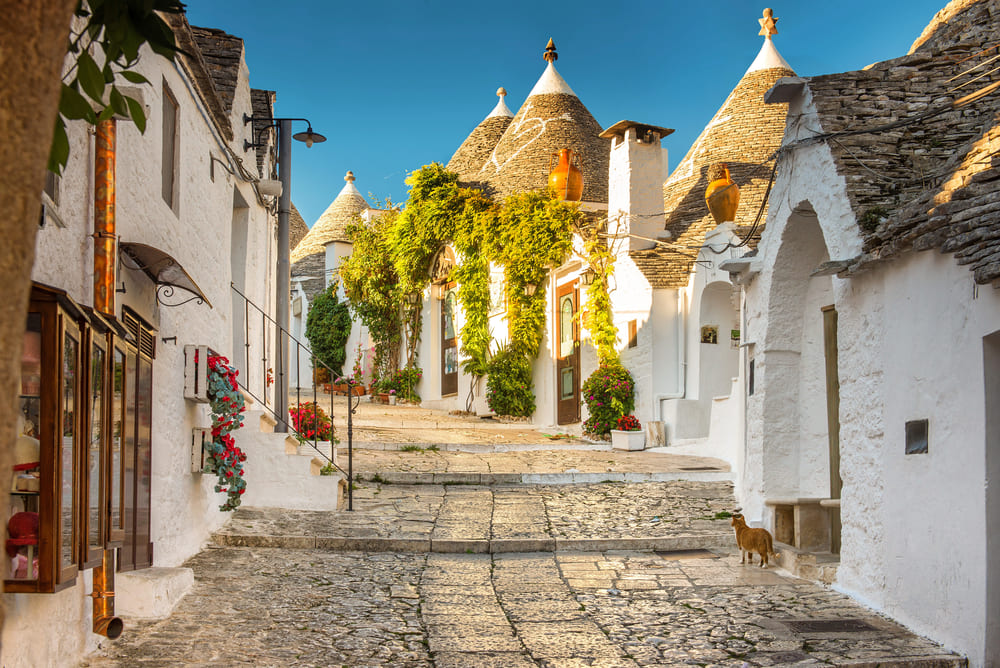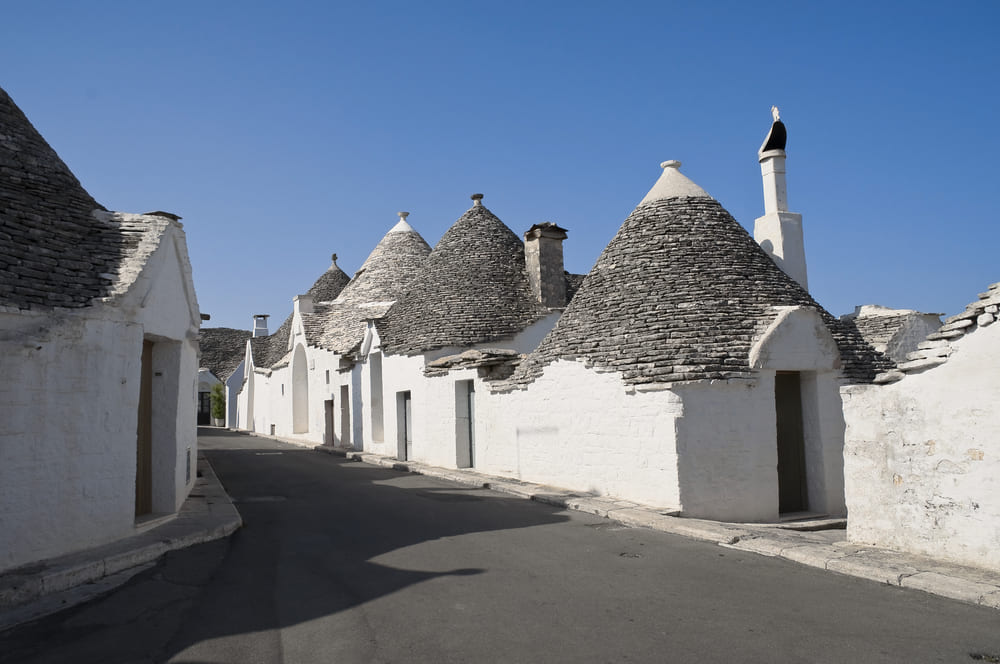Location Information
Alberobello Tour
All About Alberobello Tour
Alberobello is an Italian town of about 10 thousand inhabitants in the metropolitan city of Bari, in Puglia.
Famous for its characteristic houses called “Tuguri” or Casedde “, Italianized with trulli, Alberobello is part of the Itria Valley and the Murgia dei Trulli.
Also known as the “Capital of Trulli”, Alberobello is a village in Puglia where it is absolutely worth a visit if you decide to spend your holidays in this wonderful Italian region.
The “trulli” are a type of conical construction of dry stone, traditional of central-southern Puglia. Most of them arise in the Itria Valley, where Alberobello is located. These buildings are the improvement of the prehistoric thòlos, present in the various areas of Italy, however the trulli are distinguished from them by their continuity of use.
Alberobello’s oldest trulli date back to the 14th century. It was in that period that this land, initially uninhabited, was assigned to the first count of Conversano Andrea Matteo III Acquaviva d Aragona, who decided to introduce about forty peasant families from the fief of Noci. With the passage of time arose in the area of rural settlements which, merging gradually formed real villages nicknamed later Aia Piccola and Monti.
The impressive expanse of trulli in Alberobello was recognized as a World Heritage Site in 1996 and awarded the Orange Flag by the Italian Touring Club due to its excellent accommodation and architectural harmony. Winding alleys and characteristic squares intertwine in the Rione Monti, where the “Siamese trulli” stand out, with their original two-cone roof, the Church of Sant’Antonio and the Trullo Sovrano. The Museum of the Territory, housed in a complex of communicating trulli, and the House of Love, now a precious tourist information point, the first building in the entire town built with lime and mortar, are a must see in Alberobello.
Alberobello Tour Attractions
Rione Monti
It is one of the most magical places in Puglia, the Monti di Alberobello district with its characteristic alleys, where more than a thousand trulli are concentrated, the heart of the country and the symbol of Puglia.
A walk in the Rione Monti is equivalent to an immersion in history, admiring the characteristic architecture of the trulli and the symbols that distinguish them in the heart of Alberobello.
Eight roads and about 15 hectares draw what has been a National Monument and UNESCO World Heritage Site for over a century. The ancient district with white houses with dark domes reveals infinite treasures and more than a thousand trulli. From the main and most suggestive streets, via Monte San Michele, via Monte Nero, via Monte Pasubio, to the smaller dominated alleys, on the hill, and to the trullo church of Sant’Antonio.
Trullo Church
At the end of the Monti district there is a characteristic Church in Trullo. It was built in 1927 and is dedicated to Saint Anthony of Padua, of which it houses a relic. It is not exceptionally beautiful, but it has a Greek cross interior and a 21 meters high dome that incorporates the typical shapes of the nearby trulli.
The church of Sant ‘Antonio is a sober trullo-shaped building of worship, and it is especially indicated for the singular typology that leads back to the traditional forms of building. Raised in a few months and open to the public in June 1927, it represented the extreme appendage of the Monti district and arose as a symbol of struggle against other religions, at least according to the tradition reported in the activity of the client, Don Antonio Lippolis.
Trullo Sovrano
The largest trullo of Alberobello is located outside the monumental area just behind the church of Santi Cosma e Damiano. For its size it is called by all Trullo Sovrano even if the real name until 1916 was the court of Pope Cataldo. Built as the home of the priest Cataldo Perta (1744-1809), it represented a kind of hamlet with the trulli around which the employees lived.
It represents the only trullo to have an elevated floor, reachable from the inside through a masonry staircase, one of the first to be built with mortar. The majestic conical dome, about 14 meters high, stands imposingly in the center of a group consisting of twelve cones.
Over the centuries the Trullo Sovrano has played the role of apothecary, chapel, oratory.
Trullo Sovrano is a particular construction not only for its size but also for the architectural technique used. It is the only one with a double floor accessible by a staircase and was built using mortar to bind the stones.
Gallery



